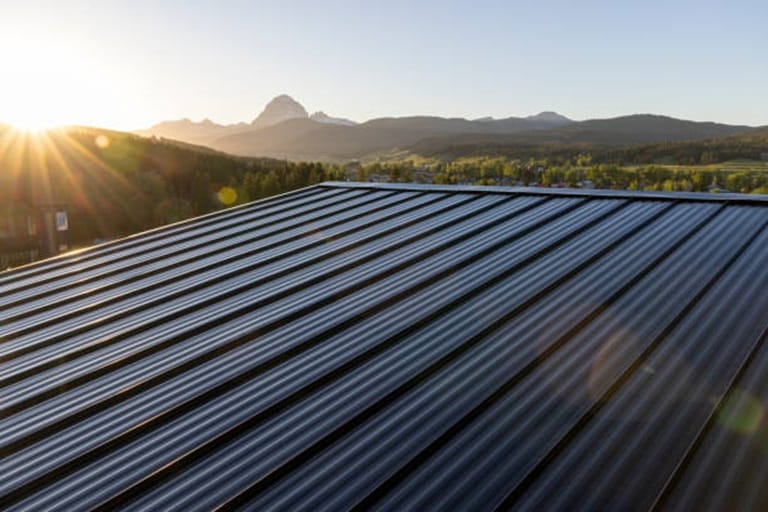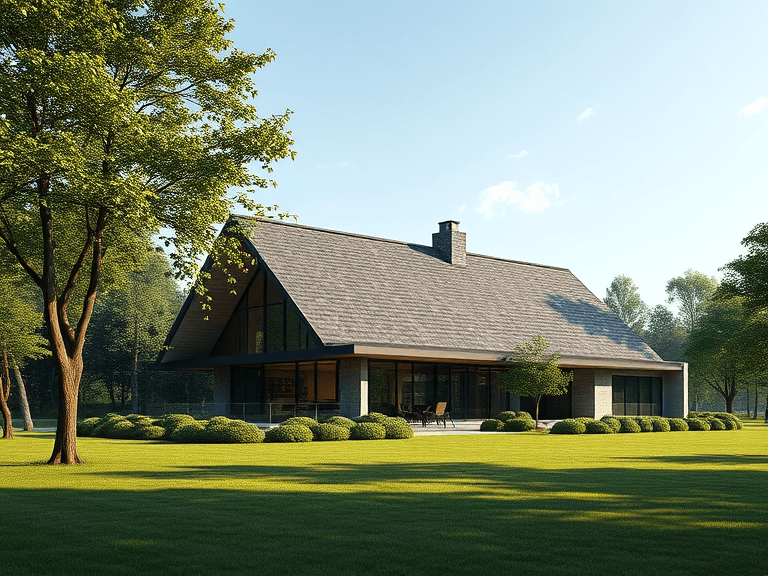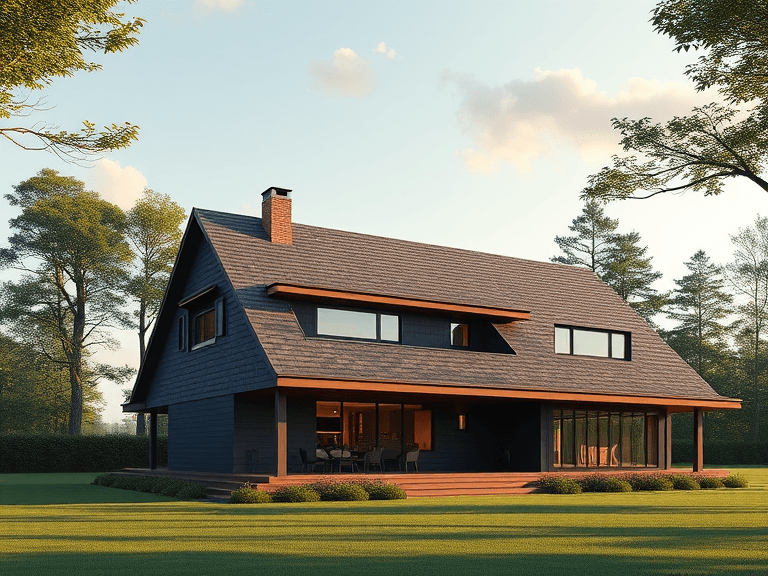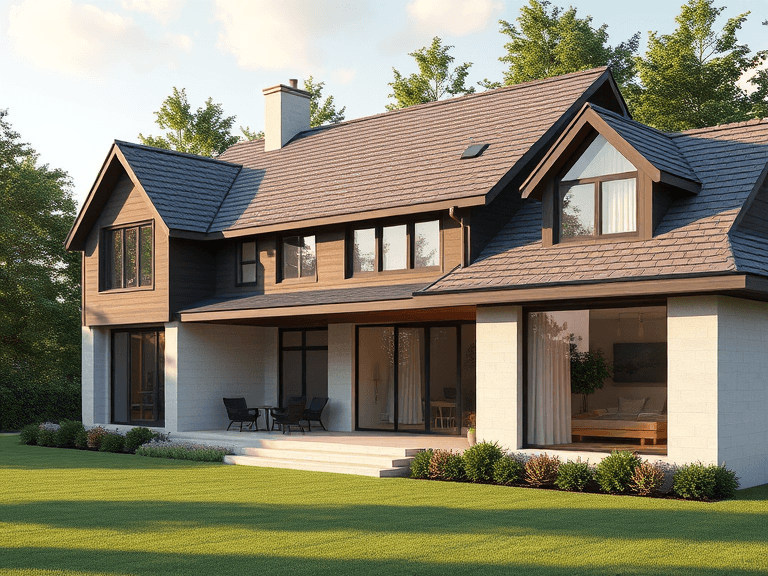
Metal roofing refers to a type of roofing system that incorporates metal panels or tiles as the primary material. Typically fabricated from steel, aluminum, copper, or zinc, metal roofs are designed to provide durability, longevity, and resistance to various environmental elements. The use of metal for roofing has gained significant traction over recent years, becoming a preferred choice across both residential and commercial buildings. This rising popularity can be attributed to the numerous advantages metal roofing offers, such as energy efficiency, reduced maintenance costs, and eco-friendliness.
Metal roofing systems can commonly be found in various forms, including standing seam, corrugated panels, and shingles. These configurations allow versatility in design and compatibility with a wide array of architectural styles. The installation process involves securing the metal panels onto a solid structural base, typically plywood or OSB (oriented strand board), creating a watertight seal. Furthermore, the materials employed in metal roofing are often recycled and recyclable, aligning well with contemporary sustainable building practices.
The increased adoption of metal roofing is also driven by its reputation for resilience against harsh weather conditions, making it an ideal candidate for regions prone to severe weather events. Moreover, advancements in manufacturing processes have led to a significant reduction in noise associated with rain and hail. As homeowners and builders continue to seek options that combine aesthetic appeal with functionality, an examination of the benefits and drawbacks of metal roofing installation becomes ever more relevant, offering valuable insights for those considering this roofing option.
Benefits of Metal Roofing
Metal roofing offers a multitude of advantages that make it an appealing choice for many homeowners and builders. One of the most significant benefits is its exceptional durability. Metal roofs can endure a wide range of extreme weather conditions, including heavy rain, strong winds, and snow accumulation. This resilience significantly reduces the likelihood of needing frequent repairs or replacements, making metal roofing a long-term investment.
In addition to durability, metal roofing is known for its impressive longevity. While traditional roofing materials may need to be replaced every 15 to 20 years, a metal roof can last up to 50 years or more with proper maintenance. This extended lifespan not only reduces the frequency of roof replacement but also contributes to lower overall costs for homeowners over time.
Another notable benefit of metal roofing is its energy efficiency. Metal roofs are designed to reflect sunlight, which helps minimize heat absorption. This reflective property can lead to reduced cooling costs, particularly in warmer climates where air conditioning usage is high. Homeowners may find that their energy bills decrease following the installation of a metal roof, providing further financial advantages.
Additionally, metal roofing is resistant to rust and corrosion, which is often a concern for homeowners in humid or coastal areas. Unlike asphalt shingles that can become brittle over time, metal roofs maintain their integrity and aesthetic appeal throughout their lifespan. This resistance to deterioration ensures that the roofing remains functional and visually pleasing without requiring excessive maintenance.
Overall, the installation of metal roofing presents numerous benefits, including durability, longevity, and energy efficiency. These characteristics make it a worthwhile consideration for anyone looking to enhance the quality and sustainability of their home. When weighing the options for roofing materials, the advantages of metal roofing certainly deserve careful consideration.
Cost Considerations
When evaluating the financial implications of roofing options, metal roofing installation typically presents a diverse salary of considerations. The initial installation costs for metal roofing can be higher when compared to traditional materials such as asphalt shingles or wood. On average, homeowners can expect to pay between $5.00 and $12.00 per square foot for metal roofing, while asphalt can range from $3.00 to $7.00 per square foot. Such differences can immediately deter some property owners from choosing metal roofing; however, it is crucial to analyze the long-term savings that this option may provide.
One of the key advantages of metal roofing is its durability and lifespan. While an asphalt roof may last around 15 to 20 years, a well-installed metal roofing system can exceed 40 to 70 years with proper maintenance. This longevity translates into reduced replacement costs over time, yielding potential savings that can offset the initial investment. Additionally, many metal roofs come with warranties that span 30 years or more, offering peace of mind to homeowners.
Maintenance costs for metal roofing are relatively low. Unlike traditional roofing options that are susceptible to mold, rot, and other environmental damage, metal roofs are resistant to these issues. Common maintenance tasks may involve periodic inspections and minor repairs, which are often less frequent and less costly than those required for other materials. Furthermore, metal roofs are energy efficient, reflecting solar heat and reducing cooling costs in hotter climates. This energy efficiency can positively influence a homeowner’s utility bills long-term.
Moreover, installing metal roofing could enhance the property’s market value. Many prospective buyers view metal roofs as a desirable feature, appreciating their durability, aesthetic appeal, and the reduced likelihood of future roofing issues. As a result, homes equipped with metal roofs may fetch higher resale prices, making initial investment considerations appear more favorable. Hence, an examination of the benefits and drawbacks of metal roofing installation should include these cost-related factors to provide a comprehensive financial perspective.
Environmental Impact
Metal roofing installation has garnered attention not only for its durability and aesthetic appeal but also for its potential environmental benefits. One of the prominent advantages of metal roofs is their sustainability. Metal roofing materials, often composed of recycled content, can significantly reduce the demand for new raw materials. This has a direct positive impact on resource conservation, making metal roofs a more eco-friendly choice compared to conventional asphalt shingles.
Moreover, metal roofs excel in terms of recyclability at the end of their lifespan. Unlike many other roofing options that end up in landfills, metal roofs can be fully recycled and repurposed, contributing to a circular economy. This characteristic of metal roofing not only minimizes waste but also aligns with sustainability goals by promoting the reuse of materials in the construction and building industry.
Another critical environmental benefit of metal roofing installation is its impact on energy efficiency. Metal roofs are known for their reflective properties, which can significantly reduce heat absorption during the warmer months. This reflective capability can lead to lower energy consumption in buildings, as it allows for a cooler living environment and decreases the reliance on air conditioning. Consequently, reduced energy consumption not only lowers utility bills for homeowners but also lessens the carbon footprint associated with energy production.
Furthermore, the durability of metal roofs plays a role in their environmental friendliness, as they often last longer than traditional roofing materials. This longevity means that less frequent replacements are needed, further reducing the environmental impact associated with manufacturing, transportation, and installation of new roofs. Overall, the examination of the benefits and drawbacks of metal roofing installation reveals that this option is not only a practical choice but also a conscientious one for the environment.

Aesthetic Appeal
Metal roofing has gained popularity not only for its durability and longevity but also for its aesthetic versatility. Homeowners and builders alike are increasingly drawn to the various styles, colors, and finishes that metal roofing offers. The materials available can complement and enhance the architectural design of a wide array of properties, ranging from modern homes to traditional structures.
One of the significant advantages of metal roofing is the wide selection of colors. Manufacturers produce metal roofs in numerous hues, allowing homeowners to choose shades that align with their desired aesthetic. This can include classic tones such as blue, green, or red, as well as neutral colors like gray and brown that suit contemporary design. The ability to select a color that harmonizes with the home’s exterior enhances overall appeal and can even add value to the property.
In addition to color, the variety of finishes and textures available for metal roofs further diversifies the aesthetic options. Homeowners can choose from a sleek, glossy finish for a contemporary look, or opt for a matte or textured finish that provides a rustic feel. Moreover, metal roofs can mimic the look of traditional materials, such as shingles or tiles, without sacrificing the durability associated with metal. This capability allows metal roofing to integrate seamlessly within various architectural styles, making it suitable for everything from craftsman-style homes to minimalist structures.
Furthermore, metal roofing is capable of achieving a striking visual impact. When installed correctly, it provides clean lines and a polished appearance, enhancing the overall exterior of any building. This aesthetic appeal, combined with functional advantages such as energy efficiency and longevity, makes metal roofing an attractive choice for many property owners. As we explore the pros and cons of metal roofing installation, it is essential to consider how these aesthetic benefits contribute to the overall value and appeal of a home or building.
Potential Drawbacks of Metal Roofing
While metal roofing is known for its durability and longevity, it is essential for homeowners to consider the potential drawbacks that may accompany installation. One significant concern is the noise generated during rainfall or hailstorms. Unlike traditional roofing materials, such as asphalt shingles, metal roofs can amplify the sound of falling rain or hail, leading to a potentially disruptive experience inside the home. For residents in regions prone to frequent rain and storms, this aspect may prompt a reevaluation of the benefits of metal roofing, despite its other advantages.
Another noteworthy issue is thermal expansion. Metal roofing materials can expand and contract with temperature fluctuations, which may result in warping or buckling if not adequately managed during installation. Homeowners must ensure that the roofing is installed with the proper fastening systems designed to accommodate this movement. Failing to do so can lead to premature wear and tear or the need for costly repairs, thus impacting the overall longevity of the roof.
Additionally, while metal roofing is often hailed for its exceptional lifespan, the initial cost can be a deterrent for many homeowners. The upfront investment for metal roofing materials and installation is typically higher than for conventional roofing options. This perceived high cost can lead to a hesitation in choosing metal roofing, despite the long-term savings potential through energy efficiency and reduced maintenance. Homeowner decision-making may thus be influenced significantly by these potential financial implications, as the initial outlay can be viewed as a considerable barrier.
In light of these potential drawbacks, it is crucial for homeowners to weigh all factors involved thoroughly before committing to metal roofing installation. Understanding how noise, thermal expansion, and cost can impact their decision will lead to a more informed choice aligned with their specific needs and preferences.
Installation Process Overview
The installation of metal roofing is a multifaceted process that entails thorough preparation and specialized techniques. Initially, homeowners must assess their current roof structure to determine its suitability for metal roofing installation. This involves evaluating the condition of the existing roofing materials, ensuring the structural integrity of the support system, and considering potential weight issues associated with certain metal types.
Once the assessment is completed, proper preparation is essential. This step includes the removal of any obsolete roofing materials, which creates a clean slate for the metal panels. Additionally, installing underlayment is crucial as it offers an extra layer of protection against weather elements. This process ensures better longevity and overall effectiveness of the roofing system.
Various installation techniques exist, with methods typically varying based on the specific type of metal used, such as standing seam or corrugated panels. Standing seam installations involve vertical panels that interlock at the seams, providing superior water drainage and eliminating potential leak points. On the other hand, corrugated metal roofs, characterized by their wavy profile, require special attention to ensure proper alignment and fastening. The choice of installation technique significantly influences the performance and durability of the roof.
Equally important is the significance of hiring qualified professionals for metal roofing installation. Experienced contractors possess the requisite skills and knowledge to navigate the intricacies of installation processes, ensuring compliance with safety standards and building codes. Hiring inexperienced workers may lead to common mistakes, such as improper panel alignment, inadequate fastening, or neglecting to account for thermal expansion and contraction. These errors can ultimately compromise the effectiveness and lifespan of the roof.
The successful installation of metal roofing requires careful planning, appropriate techniques, and professional expertise to avoid pitfalls that could result in future issues.
Maintenance Requirements
Metal roofing is often lauded for its durability and longevity, but it is essential for homeowners to understand its maintenance requirements to ensure optimal performance and lifespan. One of the key advantages of metal roofing installation is its relatively low maintenance needs compared to traditional roofing materials such as asphalt shingles or tiles. However, periodic maintenance is still necessary to keep a metal roof in excellent condition.
Regular inspections are advisable, ideally biannually, to check for any signs of wear or damage. Homeowners should look for any loose or missing fasteners and ensure that seams remain intact. Additionally, checking for rust spots is crucial, particularly if the metal roof is not coated with a protective finish. Addressing minor issues promptly can prevent more significant problems down the line, preserving the roof’s integrity and appearance.
Cleaning is another important aspect of maintaining metal roofs. While metal roofing does not accumulate debris and dirt as quickly as other materials, it is still crucial to remove leaves, branches, and other debris that may retain moisture or cause corrosion. A gentle wash using water and mild detergent is typically sufficient for cleaning. It is advisable to avoid using abrasive materials that could scratch the surface and compromise the protective coatings.
While metal roofing systems are known for minimal maintenance demands, occasional repairs may be required. This could include resealing seams or replacing fasteners that have become loose over time. Proper care and timely attention to any maintenance needs will ensure that the roof remains structurally sound and visually appealing.
Overall, an examination of the benefits and drawbacks of metal roofing installation reveals that the maintenance requirements are manageable, making it a sound investment for many homeowners. With periodic inspections and maintenance, a metal roof can provide lasting protection and performance.
Conclusion: Making an Informed Decision
In evaluating the pros and cons of metal roofing installation, it is imperative to weigh both the advantages and disadvantages in relation to your specific requirements. Metal roofing is recognized for its longevity, durability, and energy efficiency, making it a favorable choice for many homeowners. Its ability to withstand severe weather conditions, as well as its minimal maintenance needs, are significant benefits that can contribute to lower long-term costs. Additionally, the aesthetic appeal of metal roofing options has evolved, catering to various architectural styles and preferences. However, it is equally important to consider the potential drawbacks, such as higher initial costs compared to traditional roofing materials and noise during inclement weather.
When contemplating an installation, one must also reflect on regional climate conditions, energy efficiency goals, and personal budget constraints. The decision should not be solely based on the immediate financial implications or aesthetic preferences. Understanding local building codes and potential insurance benefits might further influence the decision-making process. Engaging with qualified roofing professionals can provide invaluable insight into the feasibility of metal roofing for your specific property, ensuring the right choice is made.
Ultimately, the examination of the benefits and drawbacks of metal roofing installation should culminate in a well-rounded decision tailored to individual circumstances. By considering factors such as cost, architectural compatibility, and performance, property owners can arrive at a choice that meets both their immediate and long-term needs. Such due diligence will allow you to make an informed decision, paving the way for a successful roofing project that enhances your property’s value and sustainability.




